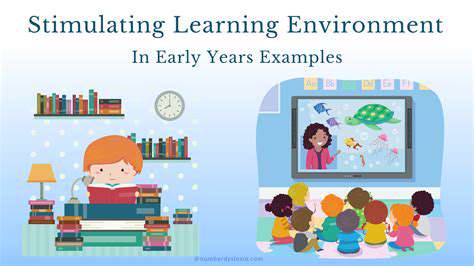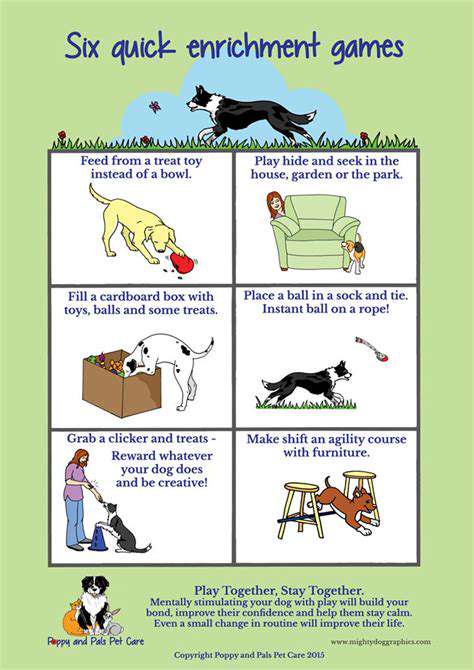How to make fetch more engaging for your dog
Understanding the Core Principles of Fetch Play
Fetch play isn't just about throwing a ball—it's a language of love between you and your dog. This shared activity builds unspoken trust and reinforces your bond in ways simple commands can't achieve. When approached with intention, fetch transforms from mindless repetition into a dialogue where every retrieve strengthens your connection.
Varying the Retrieve: Beyond the Simple Toss
Dogs thrive on novelty. Instead of predictable straight-line throws, try bouncing the ball off trees or rolling it down slopes. These unpredictable movements trigger your dog's natural prey drive, keeping their mind fully engaged. I've found that alternating between short sprint throws and long tracking retrieves mimics the varied challenges of real hunting scenarios.
Enhancing Motivation: The Importance of Rewards
Every dog has their currency—some work for kibble, others for belly rubs. The secret lies in identifying what makes your dog's tail go into hyperdrive. During training sessions, I keep a mix of high-value treats (like freeze-dried liver) and medium-value rewards to maintain excitement without overfeeding.
Introducing Distractions: Testing Engagement
Start small—maybe just having someone walk nearby—then gradually up the ante. Last week at the park, I practiced with my Labrador while kids played Frisbee nearby. This real-world testing proved more valuable than any controlled environment. The key is progressing at your dog's pace—if they disengage, dial back the difficulty.
Utilizing Different Toys: Adding Sensory Stimulation
Rotate between a floating toy for beach days, a glow-in-the-dark ball for dusk, and a crinkly plush for indoor play. This sensory rotation keeps their neural pathways firing and prevents habituation. My current favorite is a rubber toy with hidden treat compartments that release kibble when rolled—it turns fetch into a moving puzzle.
Training for Consistency and Precision: The Value of Repetition
Short, daily sessions work better than marathon weekends. I follow the rule of three—three perfect retrieves, then switch activities. This maintains focus while the muscle memory develops. Recording sessions helps spot subtle improvements in form and speed over time.
Encouraging Teamwork: Collaborative Play
When introducing multiple dogs, I use color-coded toys and separate reward markers (Yes! for Fido, Good! for Max). This prevents confusion while fostering healthy competition. The real magic happens when they start anticipating each other's moves—like canine teammates rather than rivals.
Varying the Terrain and Toy Types
Enhancing the Experience with Diverse Terrain
Nature's obstacle course offers the ultimate fetch playground. Try these terrain progressions: start on flat grass, move to shallow water, then try light woods. The changing surfaces develop proprioception—your dog's awareness of their body in space. Last month, watching my Spaniel adjust her stride between sand and pavement was a masterclass in canine adaptation.
The Impact of Different Toy Types
Texture matters more than we realize. A study at Tufts University found dogs prefer toys resembling natural prey—furry textures for herders, bird-like shapes for retrievers. I keep a toy library and track which ones get the most engagement. Surprisingly, a knotted rope often outperforms expensive gadgets for my terrier mix.
Using Scent to Enhance the Game
Before play, rub the toy on your hands or hide it in a bag of treats. This scent-marking taps into primal retrieval instincts. For advanced dogs, try the scent trail method—drag the toy along the ground before throwing to create an olfactory breadcrumb trail.
Obstacles and Challenges for Added Excitement
Household items become agility equipment—a broomstick across chairs makes a perfect jump. These makeshift courses develop problem-solving skills alongside physical ability. Just yesterday, my Corgi figured out how to roll a ball under the coffee table rather than go around—proof that obstacles spark creativity.
Rewarding Success and Varying the Play
Implement the jackpot system—after several normal rewards, surprise them with an extra-special treat. This variable reinforcement schedule maintains peak motivation. I've found that ending sessions while they're still eager (the leave them wanting more approach) builds anticipation for next time.
Training and Consistency for Optimal Results
Keep a training journal—note weather conditions, energy levels, and breakthrough moments. These patterns reveal your dog's optimal learning windows. My records showed my Shepherd performs best in cool mornings after light breakfasts—information that transformed our sessions.
Keeping it Interesting and Avoiding Boredom
Introduce theme weeks—Water Week with floating toys, Puzzle Week with treat-dispensing balls. This structured variety prevents burnout while building diverse skills. The key is observing your dog's reactions—when their ears perk up at the sight of a particular toy, you've found your golden ticket.

Rewards and Positive Reinforcement: Keeping Your Dog Motivated
Understanding the Power of Positive Reinforcement
The most effective training happens when your dog thinks they're just having fun. This subtle mindset shift changes everything—from their tail wags to retention rates. I once worked with a rescue who'd shut down at correction-based methods but blossomed when we reframed training as guess the right action to make treats appear.
Choosing the Right Rewards
Create a reward hierarchy—from everyday kibble to superstar treats like chicken. Matching reward value to difficulty level keeps motivation perfectly balanced. My current system: kibble for easy repetitions, cheese for moderate challenges, and a special tug session for breakthrough moments.
Implementing Rewards Effectively
Timing is everything—deliver treats within 1.5 seconds of desired behavior. I practice my treat-throwing accuracy like a basketball free throw—it matters more than most realize. For fast-moving dogs, I use a clicker to mark the exact moment of success, then deliver the reward.
Using Rewards for Fetch Training
Phase rewards strategically—first for touching the ball, then for picking it up, later for full retrieves. This success ladder builds confidence through achievable steps. With my shy foster dog, we celebrated just looking at the ball for a full week before attempting any retrieves.
Reinforcing Fetch Enthusiasm
Incorporate mystery throws—occasionally launch the ball when they least expect it. This element of surprise mimics the unpredictability of real prey. I'll sometimes fake throw to keep them guessing, then reward the attentive waiting—it's like canine improv theater.
Managing Potential Challenges
When interest wanes, switch to reverse fetch—have them push the ball to you with their nose. This novel approach often reignites their spark. For dogs that guard toys, I use the two-ball system—always have a second toy ready to toss when they return with the first.

- Preventing accidents during outdoor dog activities
- Caring for dogs with arthritis
- Why socializing your dog is important for their health
- Tips for keeping your dog active in the winter
- How to prepare your dog for seasonal changes
- Best flea combs for dogs with long hair
- How to safely cut your dog’s nails at home
- What to do if your dog shows symptoms of anxiety
- Helping your dog feel comfortable during pregnancy
- How to train your dog to stop jumping on people
- How to identify stress related behaviors in dogs
- How to use calming music to relax your dog